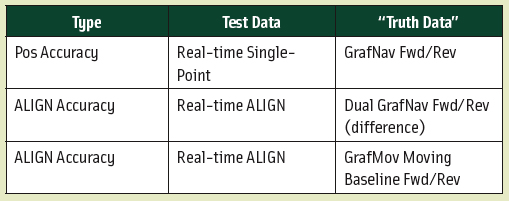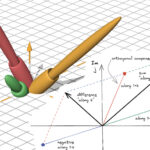The last two decades have seen the evolution of increasingly sophisticated GNSS signal processing technology. These advances include such things as improved methods for acquiring and tracking a wide variety of new signal structures, advanced multipath mitigation techniques, the development of high-sensitivity receivers for reliable operation indoors and in urban canyons, high-speed processing to reduce time to first fix, and algorithms for improved ranging accuracy and attitude estimation.
The last two decades have seen the evolution of increasingly sophisticated GNSS signal processing technology. These advances include such things as improved methods for acquiring and tracking a wide variety of new signal structures, advanced multipath mitigation techniques, the development of high-sensitivity receivers for reliable operation indoors and in urban canyons, high-speed processing to reduce time to first fix, and algorithms for improved ranging accuracy and attitude estimation.
Common to many of the new signal processing methods is the need to process the millions of chips in a GNSS signal in unconventional ways, which can dramatically increase the amount of computation the receiver must perform. For example, in typical GNSS receivers the computation of correlation functions is not difficult because the correlator reference waveform can be an ideal chipping sequence with only the values ±1, and multiplications become trivial.
However, techniques such as the high performance of the Multipath Mitigation Technology (MMT) algorithm, developed by the author and a colleague, requires correlator reference waveforms that include the effects of filtering in the receiver and the satellite. Thus, in MMT many millions of multibit multiplications would be needed to compute the correlation function for just one delay value, notwithstanding that many high-resolution delay values are actually needed.
The computational demands in this example and in many other advanced processing techniques can be dramatically reduced by first implementing a process called signal compression. In the signal compression technique discussed in the article, for which a patent is pending, a large number of raw digitized baseband signal samples (typically on the order of 107-108) is reduced to a small vector having only a few tens of samples (the exact number depends on the type of GNSS signal being processed). The compressed signal then has the appearance of a single chip of the received signal (or two separate chips in some of the newer chip-multiplexed signals considered for GPS L1C and Galileo).
This compression technique requires only simple additions to generate, and preserves all signal range and phase information. Subsequent processing of any type is dramatically simplified because of the extremely small size of the compressed signal. Therefore, substantial advantages can accrue in a wide variety of endeavors, such as range and phase extraction, phase ambiguity resolution, multipath mitigation, and integrity monitoring among others.
For the rest of this story, please download the complete article using the PDF link above.




